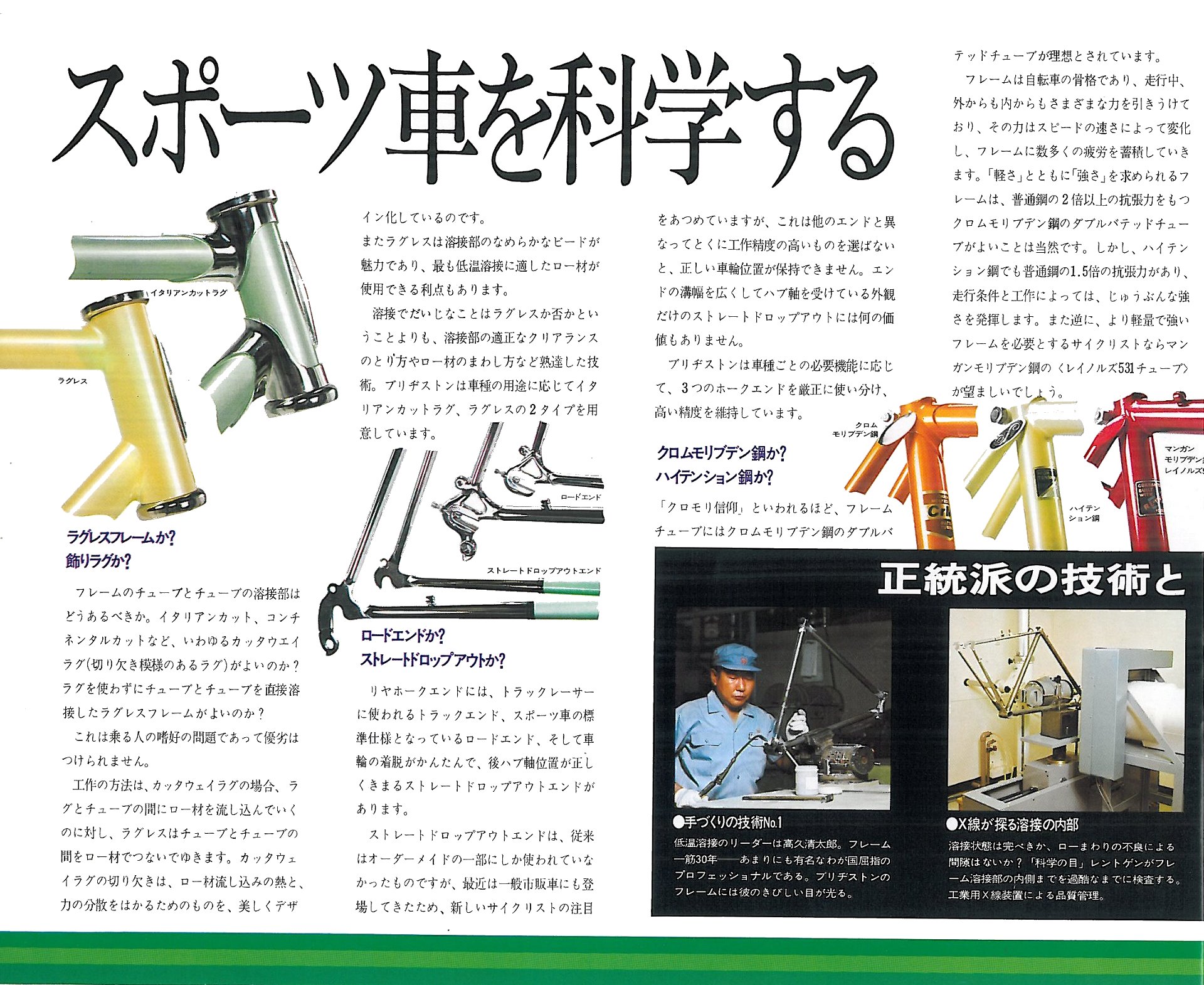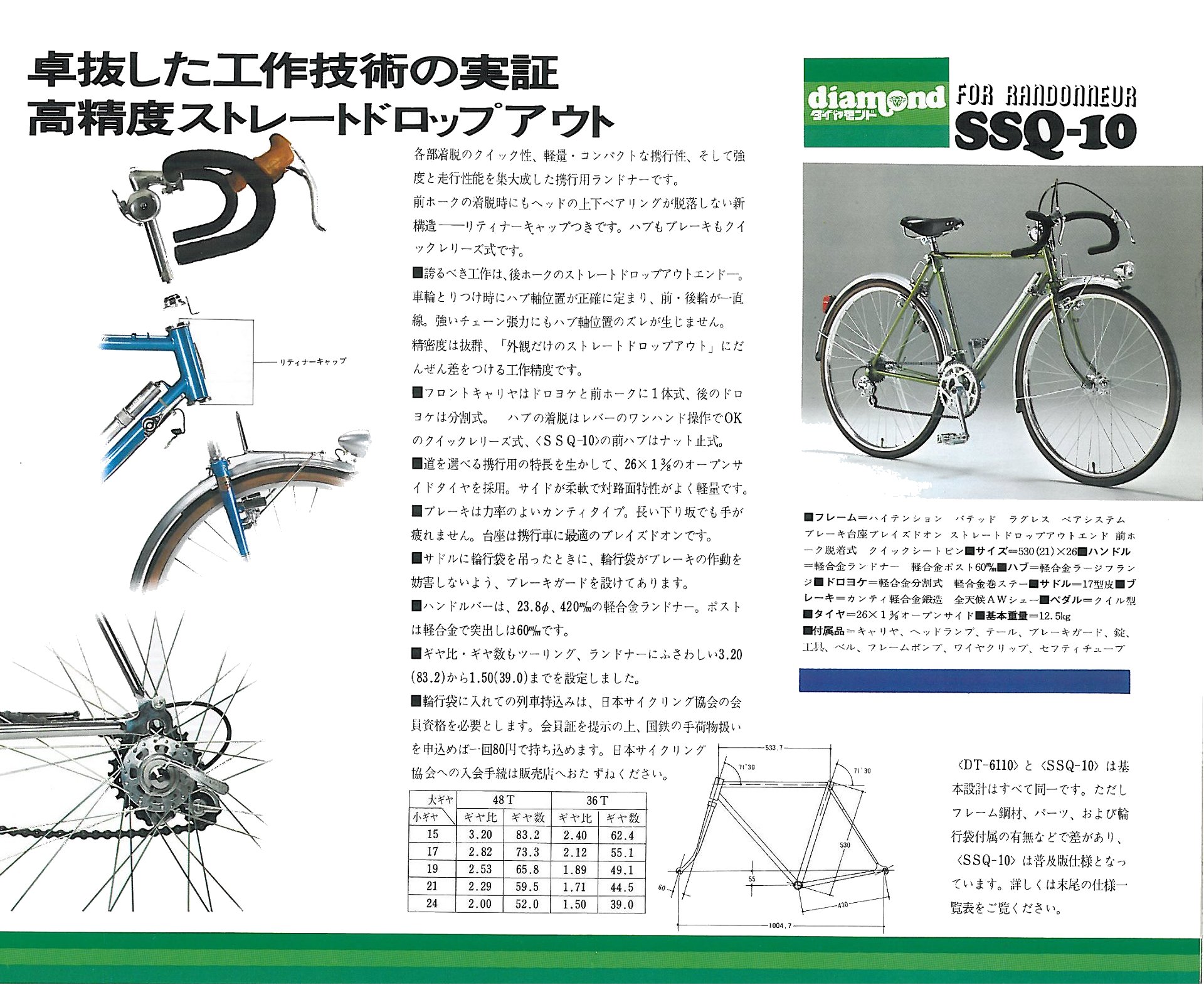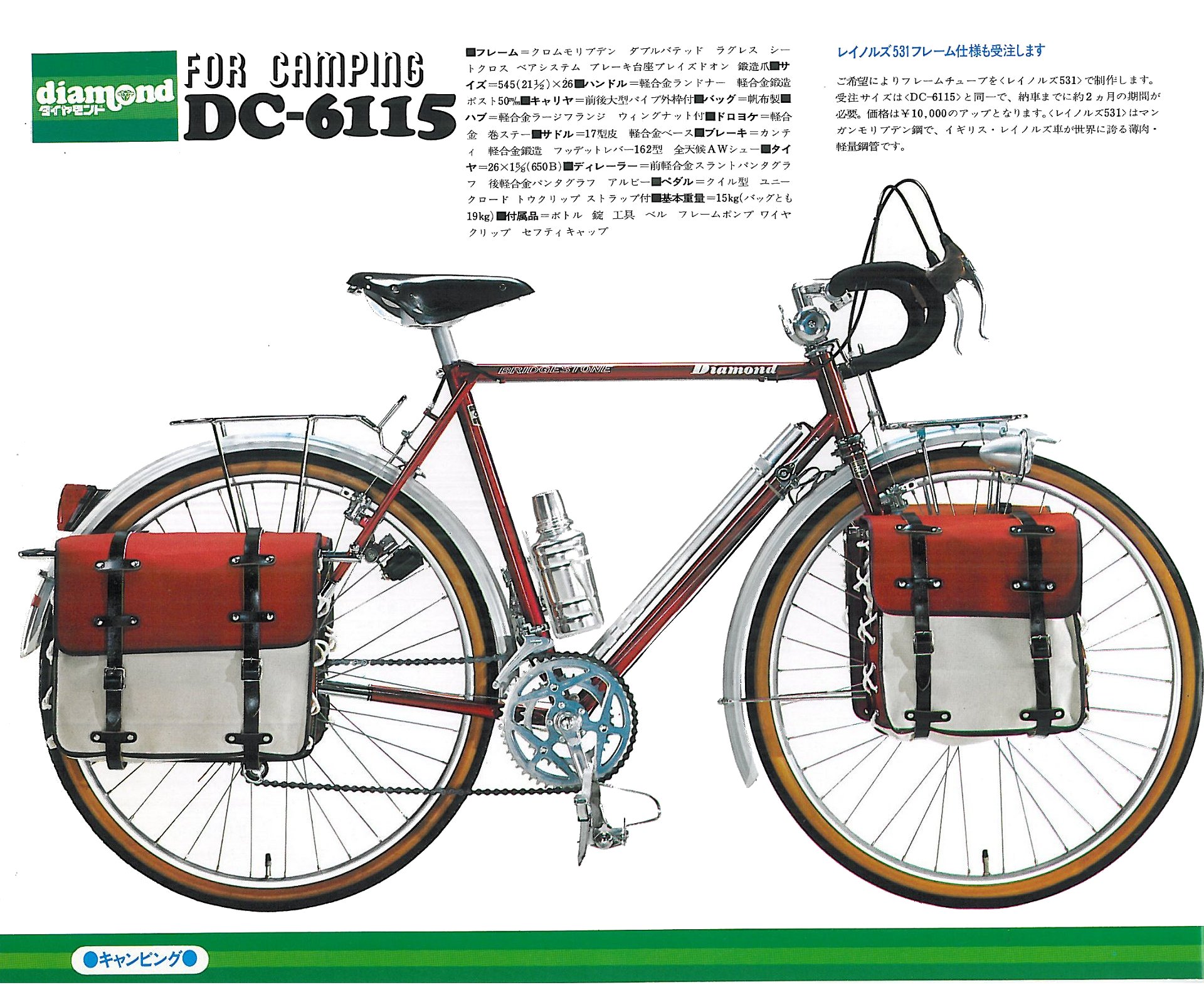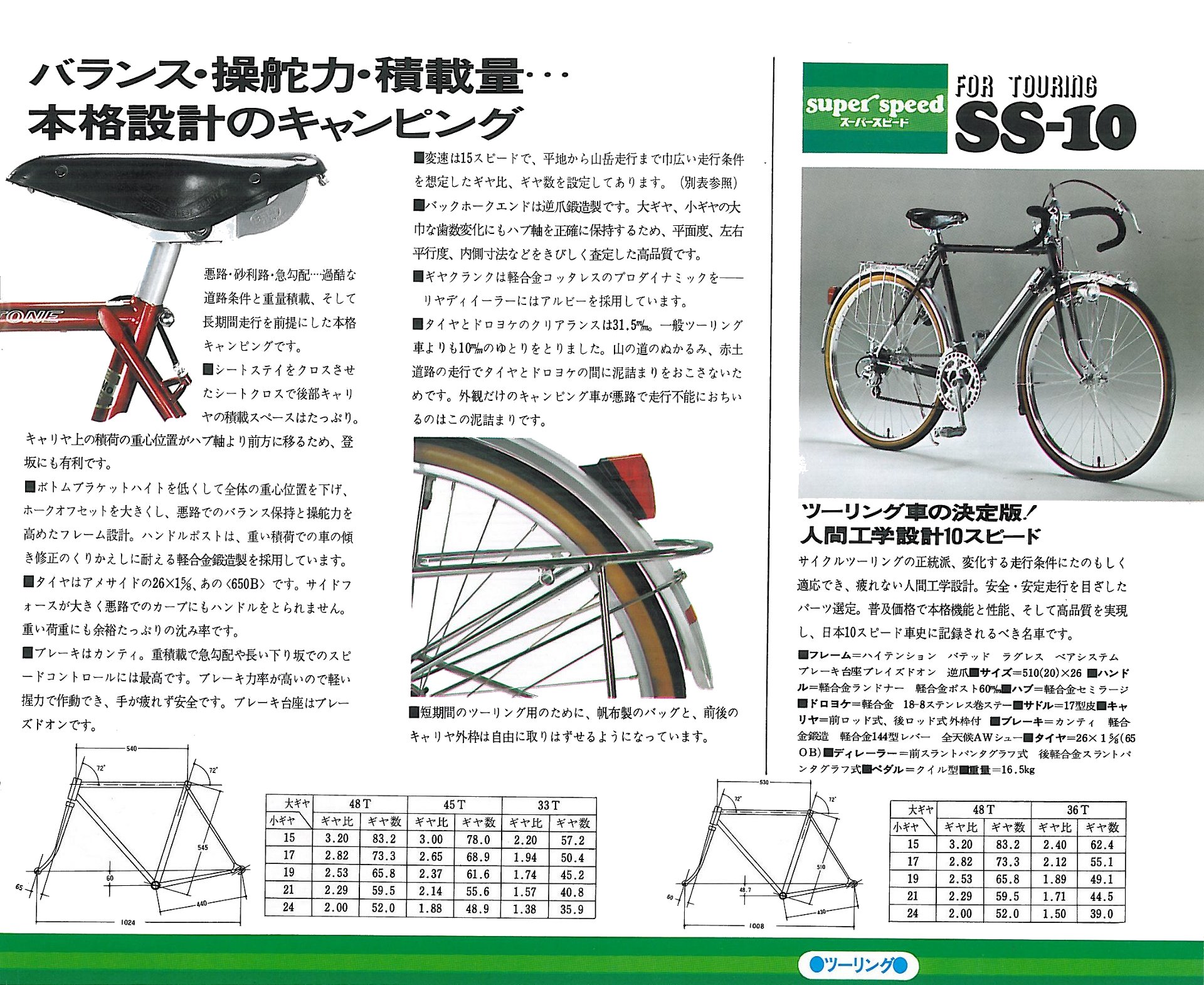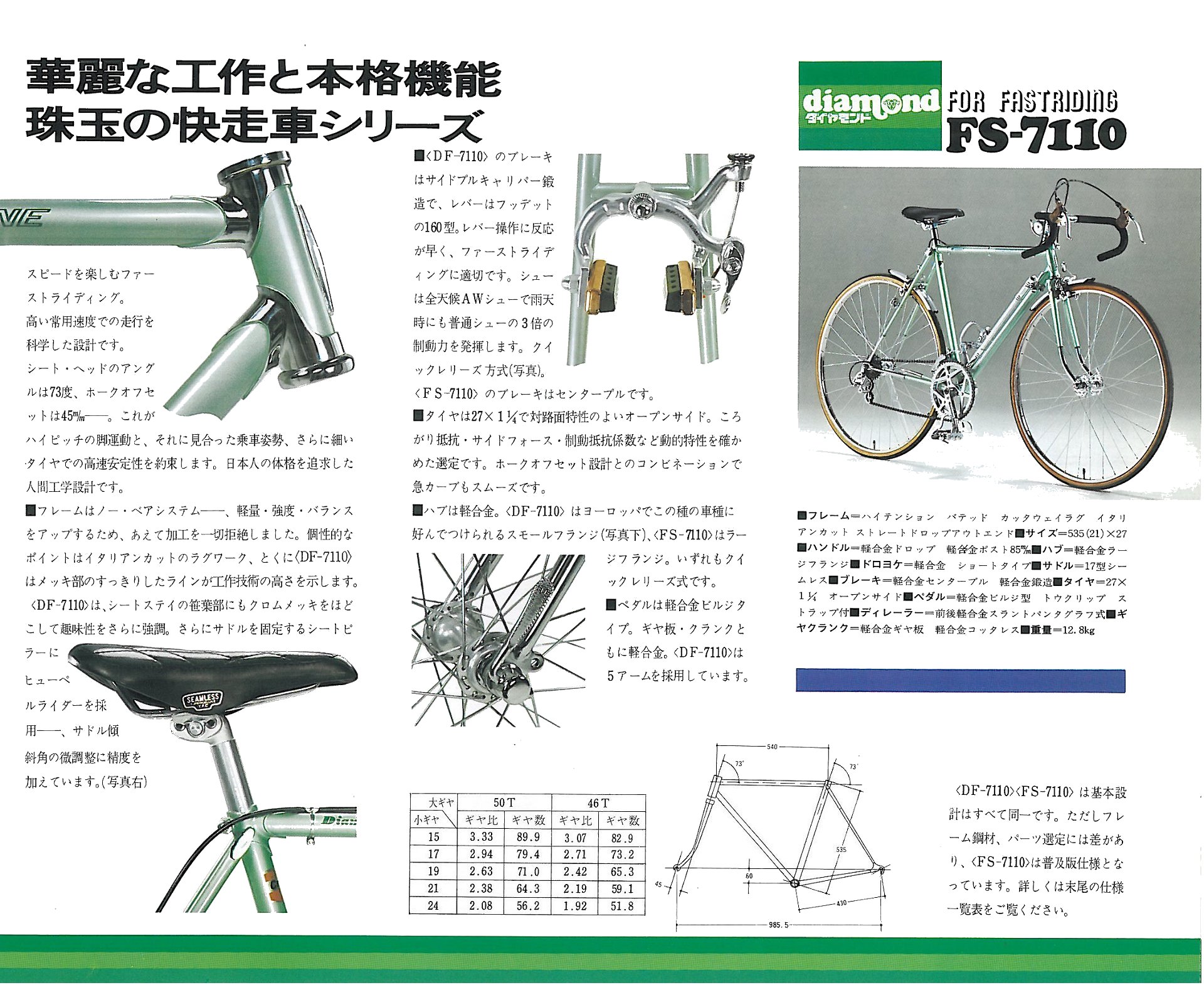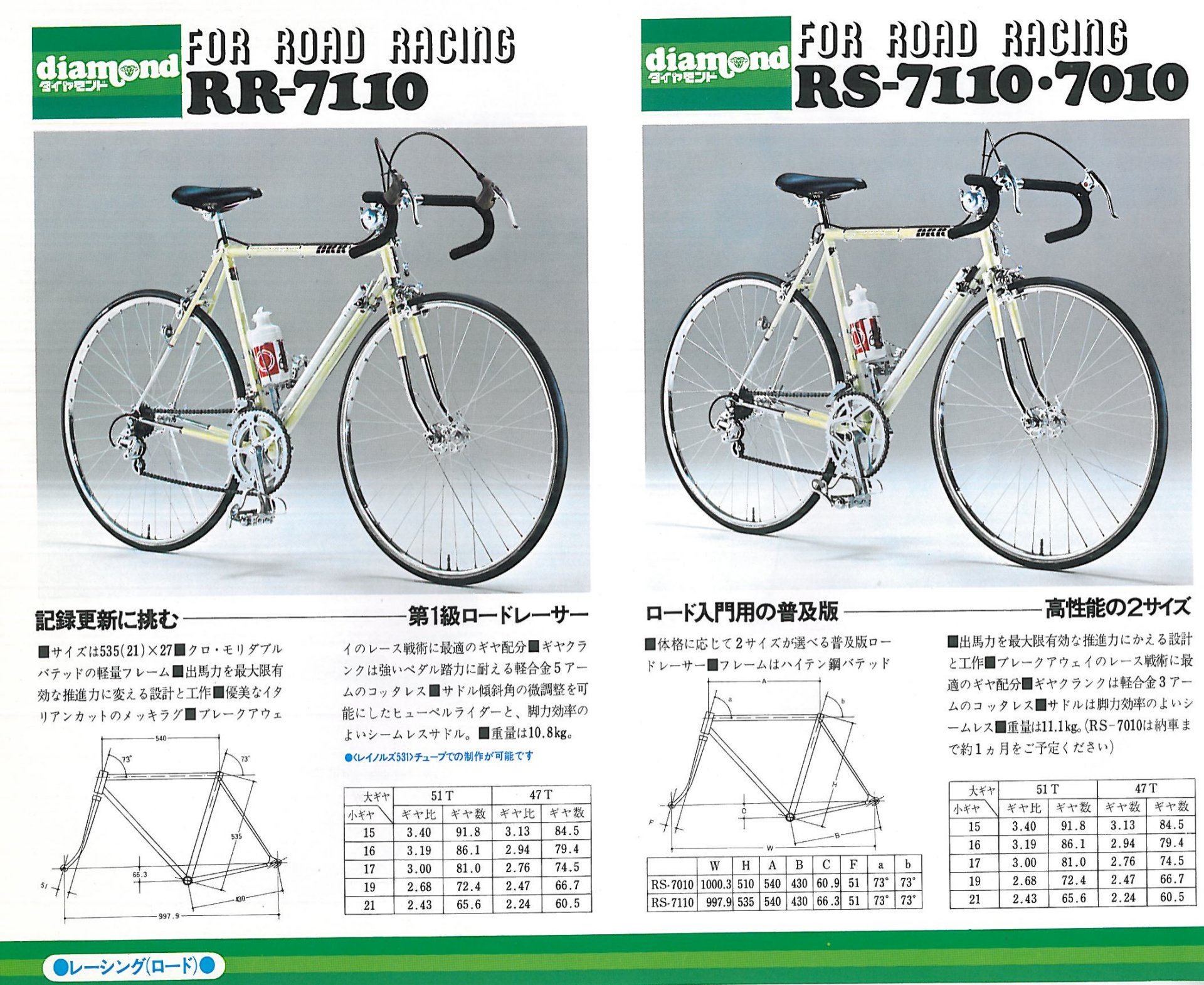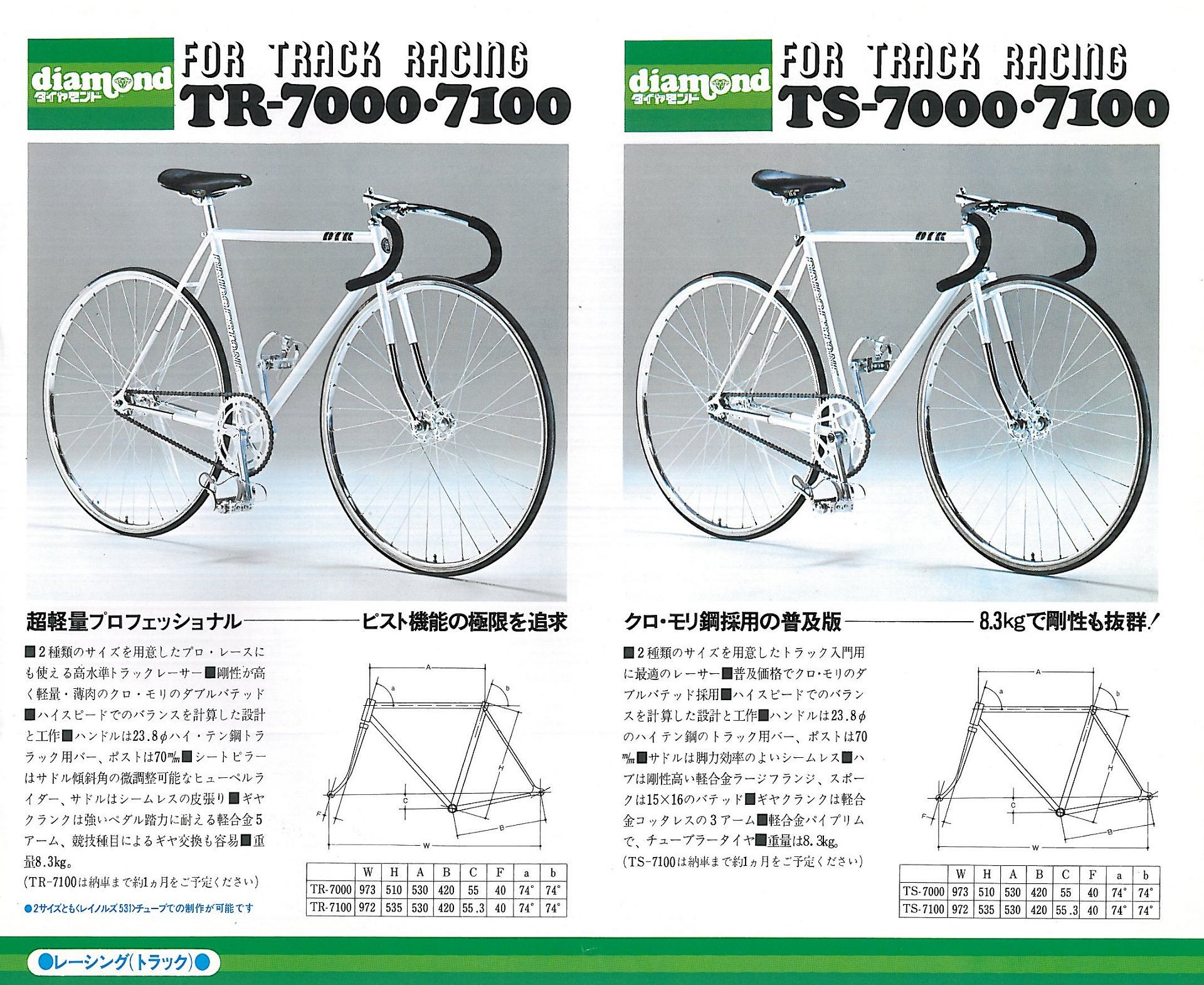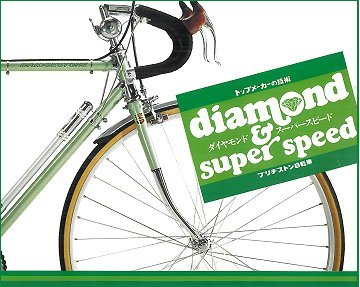
This catalog must have been familiar to those who began cycling early 1970s.
Diamond was a brand of professional sports bicycle which appeared after the traditional series of Super-Speed. I suppose that Bridgestone began to advertise the company's technology and the policy about bicycle from Diamondo series.
This catalog is A4 size, composed of 16 pages including front page.
Two kinds of Super-Speed and 11 kinds of Diamond are introduced in the catalog. There are touring model, camping model, sportif model, road-racing model, and track-racing model in the lineup as with the other mass-production makers.
As for the models DT-6110, DC-6115, DG-7110, RR-7110, TR-7000, and TR-7100, you could order a special frame which was composed of Rainorlds 531 tubes, if you pay 10000 yen as extra money. This was a selling point.
I prepared big images excluding first two pages. You can watch them with clicking each image.
This catalog was offered by Mr. T.


